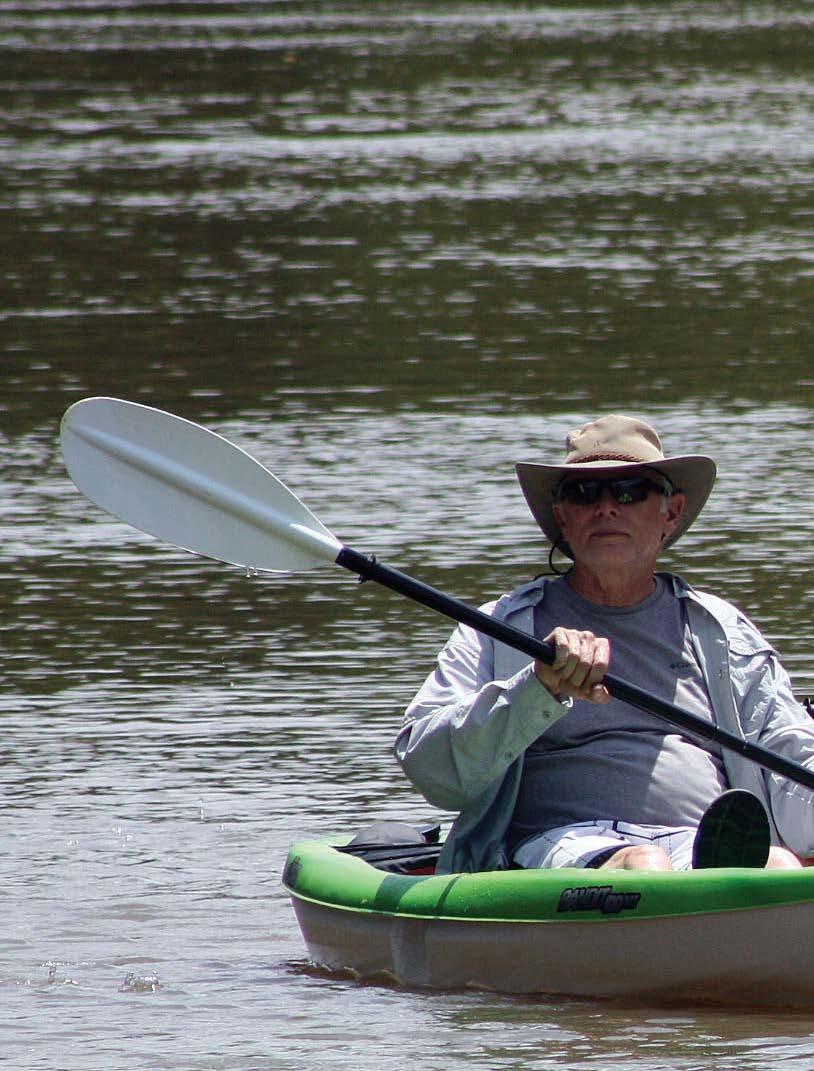
5 minute read
Take One - Filming in Rome
TAKE ONE Filming In Rome
Who doesn’t like to sit down and watch a good movie? A romantic sit-com, a spellbinding mystery, a comedy or horror flick. Whatever the pick, we all have enjoyed being immersed in the action and entertained by the experience of what we know as Motion Pictures. It’s our adventure into fantasy.
Advertisement
Lisa Smith and Ann Hortman

When Georgia opened its arms to the film industry, adventure came to us. The world of motion pictures is all around us, practically in our back yards. Whose back yards are up to production crews and how well they appreciate what they see will fit their scripts, the environment, and environs.
Back in the day, children of the Saturday matinee believed all westerns were shot on the plains, that Gene Kelly danced that well in the rain, and alien spacemen wore aluminum hats. As the capabilities of movie-making evolved, theatergoers, television, cable, and Netflix subscribers demanded more. Much, much more. They want their sharks to be sharks. They want their vampires to be really scary. Old Bela Lugosi hiding in shadows has become comedy.
When the state of Georgia struck a bargain with filmmakers, the lure was beneficial tax credits. Movie making is an expensive gamble, and strict budgets demand scrutiny with dollars wisely spent. A film that wins at the box office wins big; nevertheless, financiers demand returns on their investments.

Floyd County and Rome have been the backdrop for many features. As far back as 1910, General Motors produced the first known documentary in the area. Kraft Foods commercials and others have been filmed at Berry College. Background shots, external scenery, continued to attract filmmakers sporadically over the years and students found it fun to be extras for the Double McGuffin (1979) filmed in part at Darlington School. The Mosquito Coast (1986) followed.
Since 2000, approximately 50 or more television and filmography managers and crews have found Rome right for their projects. Among some favorites are Remember the Titans – Jerry Bruckheimer Films/Disney (2000), Sweet Home Alabama, Touchstone Pictures, (2002) The Mule, (2018).
With stiff competition from all corners of the state, Rome has aggressively sought the film industry business. Attracting production managers to “take a look” around is an art unto itself, but with Lisa Smith, Executive Director of Georgia’s Rome Office of Tourism and Ann Hortman, Camera Ready Liaison, Rome and Floyd County is ready to roll.
They bring years of experience working with production managers and understanding wants and needs. Never knowing when a call will come for some specific place to “shoot” means they remain on call, ready to jump and go. Ann says if she gets a call for a neighborhood with all green doors, you have to know where that might be, or ready to paint.
Ann says that above all else, the appeal begins with relationships. “Knowing production crew managers who feel free to call you at any time means they are comfortable in trusting you to help direct them to what they are looking for. I have had many calls asking for a specific location, and a day later, we are at the spot.”
Ann says that the glamour of movie-making does not often begin with the “Stars.” The reality is production managers make the early decisions–they know what the right background, scenery, environment, and accessibility has to be. Ann often spends countless hours driving scouts on the mission to find just the right location.
(Continued on page 14)

The Bob Moore Bridge, location for The Originals scene

Funeral scene, Need for Speed

(Continued from page 13)
One such find was the Bob Moore bridge, accessible only by walking. Shooting for The Originals (CW), they used the Rome fireboat to stabilize the cameras for a night scene— which called for the vampire to rip the heart from a victim and toss it into the water below. Upon rehearsing, several pig hearts were thrown into the river. Which, unknown to the crew, was luring the giant catfish that claim the waters there. The camera crew was excited to see and film the extremely large catfish, and the catfish were happy with the meals. “The body double was just happy to get out of the water, filled with 100 pound plus hungry catfish,” laughed Lisa.
For some features, the scene might only be a drive-by. A yet-to-be-released Disney project was looking for a school stadium, and they chose Barron Stadium. By luck, Rome High had a home game, so they got more than they planned just passing by.
Lisa believes a great deal of Floyd County appeal comes from working here and finding Southern Hospitality at its best. “The Shrimp Boat generously allowed one production group to take over their kitchen. Summit Hill Foods, formerly Southeastern Mills, let crews set up “base camp” in their back lot, as did Georgia Highlands for the Clint Eastwood production.”
“The filmmakers do not expect to get a free ride,” says Lisa. “And they use local when they can. Antique stores are great for finding props. They rent equipment, use public safety and construction if need be. Buildings and homes used are always left in a better condition when a film crew finishes production.”
Ann explained that the people they work with might not be the faces we recognize on the screen, but they are the names found in the credits, the experts who make it all happen. “They make movies that become box office hits. They are incredibly talented people, and we want them to get to know Rome and feel comfortable working here.
At the very end of a film, we really want to see the Georgia Peach logo. And a special Thank You to the people of Rome, Georgia. That is what makes all the hard work worthwhile.”
The Kingmakers, filming and extras











